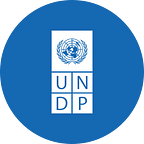Changing our lens: from deprivation to opportunity — a narrative for working with border communities in Burundi
By UNDP Burundi
Burundi is one of the smallest countries in Africa, but it has a considerable border area. In fact, it shares 1,140 km of land borders with its neighbors the Democratic Republic of the Congo, Rwanda and Tanzania. Only around 13% of the population live in urban areas, while as many as 15% live in border communities. Given past and current instability and fragility in the region, Burundi’s border communities include returnees and refugees. These border communities are often economically disenfranchised (esp. for women and youth), with poor levels of service delivery, inadequate infrastructure and relatively elevated levels of insecurity and crime.
In mid-2020 the UNDP Burundi office set out on a journey to figure out how to best support and enable positive transformation in the country’s border communities. We did this as part of the first cohort of Deep Demonstrations supported by UNDPs Innovation Facility (and generously funded by Denmark).
As a Deep Demonstration, we have since mid-2020 gone through an extensive process with our partner Chôra Foundation where we have been exploring the conditions and experiences in border communities from a variety of perspectives, we have explored the underlying causes and dynamics shaping what is happening in these communities and considered how we might best respond to development challenges in border areas through a Portfolio approach rather than single point interventions.
In this process we evolved and reframed how we (and others) think about the problems facing border communities. We reframed how we approach border communities from trying to empower the communities towards seeing them as a development agents who have unique needs and influence given their liminal position, their in-between existence as transcultural and transnational spaces and social dynamics. In this process, our implicit objectives switched from a problem to an opportunity lens — from “aiming to create employment opportunities for the poor” towards “working to expand communities’ choices and opportunities”. After all, the ability of border communities to thrive in conditions of intermittent access to services, low safety and security, and conditions to constant chaos and flux indicates resilience and innovation. This is what we wanted to learn from and build on with the design of a new Portfolio.
The process also helped us revise our thinking to better reflect the nimble cross-border dynamics that apply in these areas. Border communities are not siloed but are characterized by continuous cross-border exchanges and interdependence. This reality requires a different thought process to service delivery, moving from focus on services within borders towards cross-border accountability and collaboration.
Based on these revelations, we’ve acknowledged the need to switch from an intervention logic of using many stand-alone projects, towards one that is multi-faceted and rooted in a portfolio logic.
This reframing has unlocked new ways for us and our partners to think about and respond to the challenges faced by local communities. Based on these insights, we are now working on developing a portfolio of experiments to begin to help tackle the challenges facing border communities.
This portfolio is rooted in three core objectives and aims to address different aspects of the complex ecosystem in border areas. We named these (Know Your Crossing, Energy and Sustainability, 2 Nations 1 Stop, Access to Market, Mobile Services and Youth 2 Market) and are now developing ideas for what interventions could look like under each of these:
- Know your crossing: Women informed about rights and rules around border crossing and their ability to safely and confidently navigate borders in daily activities.
- Energy and sustainability: Cross-border community-based energy solutions that uncover local potential and resources for sustainability in liminal spaces.
- 2 Nations 1 Stop: One-stop cross-border centers build liminal accountability dynamics by providing immediate and easily available services and information.
- Mobile Services: Mobile phones bridge public service gaps (e.g. on immigration, education, and land disputes) between the center and liminal spaces.
- Access to Market: Markets are inclusive intermediaries facilitating economic exchanges and social opportunities.
- Youth 2 Market: Public services attract and make financial and social capital to encourage entrepreneurship amongst youth.
The visual below produced in collaboration with our partner Chôra Foundation provides a summary (note this is a work in progress).
We will share our learning from this process as we progress. If you are interested in this work or if you are working on similar issues in other countries, then we’d be very curious to hear from you
